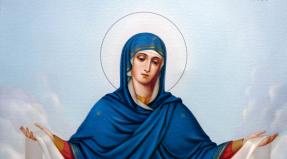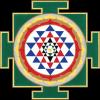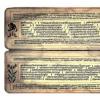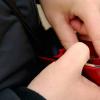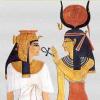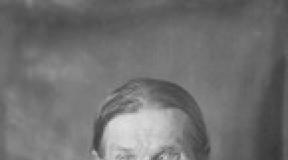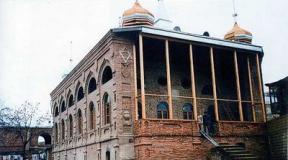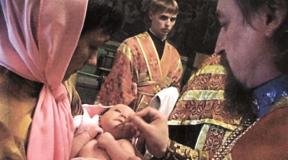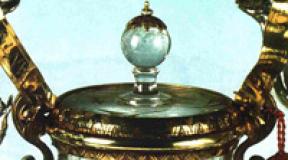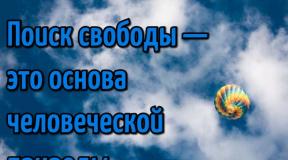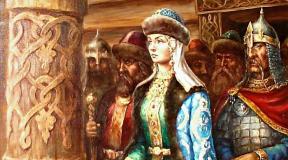The main types of religions. World religions
Over the past 10-odd years, Russia has witnessed a period of religious revival, the return of the population to traditional religious values. The mass of the country's population remained faithful to their religious convictions, as evidenced, in particular, by all objectively conducted recent opinion polls, as well as the desire of Russians to perform the most important religious sacraments and rituals (for example, such as the sacraments of baptism, chrismation, communion and marriage at Christians, circumcision and wedding ceremonies for Muslims and Jews, funeral rites for followers of various religions, etc.).
The most influential religion in Russia is christianity, and above all one of its most important directions - orthodoxy, which in our country is primarily Russian Orthodox Church... According to a sociological poll conducted in 2002, 58% adhere to Orthodoxy. If we proceed from the fact that the population of our country, according to the All-Russian Population Census, was 145.2 million people on October 9, 2002, then we can assume that the Orthodox Christians number in it approximately 84 million people.
Orthodoxy is professed by the bulk of the Russian population of the country, as well as the bulk of such as Izhorians, Vepsians, Sami, Komi, Permian Komi, Udmurts, Besermyans, Chuvashs, Kryashens, Nagaybaks,. The vast majority, Chulyms, Kumandins, Chelkans, Shors, Kets, Yugs, Nanai, Ulchi, Oroch, Itelmen, Aleuts, the predominant part, Selkups, Tubalars, Tofalars, Evens, Oroks, a significant part of the Enets, Telengits, Non, Negidal big number Nivkhs, although many of the listed peoples of Siberia and the Far East combine the Orthodox faith with remnants of shamanistic and other local beliefs. Most of the Greeks and Bulgarians living in Russia are also Orthodox. Orthodoxy is also widespread among a part of the Western Buryats; it is adhered to by a part (primarily Don) and Mozdok Kabardians.
According to an expert assessment based on the existence of a certain correlation between religion and ethnicity, Orthodox Christians prevail among believers in the overwhelming majority of the constituent entities of the Russian Federation. The only exceptions are the Chechen Republic, the Republic of Ingushetia and the Republic of Dagestan, where there are few Orthodox Christians, as well as the Kabardino-Balkarian Republic, the Karachay-Cherkess Republic, the Republic of Kalmykia, the Republic of Bashkortostan, the Aginsky Buryat Autonomous Okrug, where Orthodox Christians, although they do not form the majority of the population, are represented very large groups (in some of these constituent entities of the Russian Federation they constitute only slightly less than half of the believers).
In addition to the Russian Orthodox Church, to which the overwhelming majority of the Orthodox population of our country belongs, there are several other Orthodox church associations and individual communities operating in Russia, but their number is very small. it Russian Orthodox Autonomous Church, church communities, subordinate Russian Orthodox Church Abroadcommunities recognizing leadership Kiev Patriarchate , different branches True Orthodox (catacomb) church,as well as scattered groups of so-called "True Orthodox Christians."The most famous community of the Russian Orthodox Autonomous Church is located in the city of Suzdal, Vladimir region; there are followers of this church organization in Moscow, Ufa, Tyumen, Ussuriisk (Primorsky Territory), Orenburg region, the Udmurt Republic and in a number of other places. There is a parish subordinate to the Russian Orthodox Church Abroad in Krasnodar, a parish subordinate to the Ukrainian Orthodox Church of the Kiev Patriarchate in the city of Ishim, Tyumen region. The number of followers of the Russian Orthodox Autonomous Church in Russia, as well as of Russian parishes of the Russian Orthodox Church abroad, totals 50 thousand.
In different places of Russia live old believers- Orthodox Christians who did not accept the reforms carried out by the Patriarch of the Russian Orthodox Church Nikon in the middle of the 17th century, which consisted primarily in bringing the liturgical books into conformity with those of the Greeks. Old Believers are divided into a large number of different groups, which can be divided into two branches: priests and bespopovtsy. Popovtsyinclude three main church associations of Old Believers: Russian Orthodox old Believer Church (Belokrinitskaya hierarchy), the Russian Old Orthodox Church and co-religionists.
Closest to the Russian Orthodox Church fellow believers- a group of Old Believers who preserved the service according to the old books, but submitted in 1800 to the leadership of the Russian Orthodox Church. Co-religionists themselves usually call themselves Orthodox Old Believers. Nowadays there are few united believers - according to rough estimates, from 6 to 12 thousand people. They are available in Moscow, St. Petersburg, Ivanovo, in the village of Bolshoye Murashkino (Nizhny Novgorod region).
Another church association of Old Believers-priests - Russian Orthodox Old Believer Church(Belokrinitskaya hierarchy) is the largest Old Believer organization in the country (about 1 million supporters). Having emerged in the Beglopop community (the Beglopopites received priests who had escaped from the Russian Orthodox Church), this church finally managed to create its own hierarchy in the middle of the 19th century. Most of the supporters of the Belokrinitskaya hierarchy are in, as well as in Moscow, the Moscow region, St. Petersburg, Saratov, the Republic of Buryatia, the Republic of Sakha (Yakutia), Krasnodar Territory, Perm and other regions.
Another association of Old Believers-priests is Russian ancient Orthodox church(according to various sources from 250 thousand to 500 thousand or more people). There are many followers of this church in Moscow, Moscow Nizhny Novgorod, Chita, Bryansk and other regions. In the Nizhny Novgorod region, they are concentrated primarily in the Semenovsky, Urensky, Gorodetsky districts. Recently, this church split, and from it the Old Orthodox Church of Russia, which enjoys the greatest influence in the Kursk Region and Krasnodar Territory, emerged. The Russian Old Orthodox Church itself is now officially called the Old Orthodox Patriarchate of Moscow and All Russia.
Popovtsy also include two small groups of so-called catacomb co-religionists, however, who do not maintain any relations with their fellow believers of the Moscow Patriarchate. it andreevtsy(about 10 thousand people) and clientele(5 thousand people). The former are found in the Republic of Bashkortostan and some regions of the Urals, in the Krasnodar Territory and Eastern Siberia, the latter also in the Urals, Siberia and the Far East.
There are much more unpopular associations of the Old Believers than priests. These are Chapel, Pomorskoe, Fedoseevskoe, Filippovskoe, Spasovo consent, runners, Ryabinovites, Melchizedeks, etc.
Followers Hourly consent do not consider themselves unpopular and consider the absence of the priesthood as a temporary phenomenon. Their total number is unknown, but, apparently, it now does not exceed 300 thousand people, although it was once much more significant. The chapels are settled mainly in the Perm, Sverdlovsk, Saratov and Tyumen regions, Altai Krai, Krasnoyarsk Krai and other regions.
Pomeranian, or danilovskoe, consent (the official name of this church association is Ancient Orthodox Pomor Church) stands out among the majority of pop-free consents for its moderation and is the most numerous of them (in Russia - 800 thousand people). Pomors live in Moscow, the Moscow region, St. Petersburg, the Republic of Bashkortostan, the Samara region, the Altai Territory and other places.
Close to Pomeranian Fedoseevsky consent(10 thousand people) has supporters mainly in Moscow, Vladimir, Nizhny Novgorod, Perm and Leningrad regions.
Coming out of the Pomeranian environment Philippian consent, notorious for its "burns" (self-immolations), now, according to one of the rough estimates, there are 200-300 people. Filippovtsy meet in small groups in the city of Orel, Belovsky and Guryevsky districts of the Kemerovo region. Their only well-organized community is located in the city of Kimry, Tver region.
Number of followers Spasov's consent (also called netovans) is probably 30-40 thousand people. Spasovo consent is mainly presented in Nizhny Novgorod, Saratov, Vladimir, Ulyanovsk regions, the cities of Saratov, Orenburg, Samara, Ulyanovsk, Penza, Nizhny Novgorod, Vladimir and other places.
Separated from the Filippovites runner, or wanderer, sense, characterized by public nihilism, now has only about 1,000 supporters. The runners themselves call themselves true Orthodox Christians itinerant... They are mainly concentrated at present in the Kemerovo, Perm, Yaroslavl, Tomsk regions, to the northwest of the city of Tomsk. The self-baptized people (grandmothers, self-crosses) who branched off from the Spassovites are very few in number, there are no more than several thousand people. They are found in Orenburg, Nizhny Novgorod and a number of other regions.
Close to self-baptized Ryabinovsky sense, recognizing only an eight-pointed cross made of mountain ash, and currently has only a very small number of supporters. The main centers of concentration of followers of this persuasion are the city of Chistopol in the Republic of Tatarstan (Tatarstan) and the city of Sterlitamak in the Republic of Bashkortostan.
It is not entirely clear the origin of the popless sense melchizedek, whose followers receive communion with bread and wine, displayed the day before in front of the icons. There are Melchizedeks in the Republic of Bashkortostan in the cities of Ufa, Blagoveshchensk, Sterlitamak, Ishimbay, Biysk and in the village of Zalesovo, Altai Territory (about 1,000 people).
The overwhelming majority of Old Believers are Russians, although there are also Ukrainians, Belarusians, Karelians, Finns, Komi, Udmurts, Chuvashs and representatives of other peoples among them.
In addition to the Old Believers, other denominations also emerged from the Orthodox milieu, to varying degrees from Orthodoxy.
So, they are quite close to Orthodoxy johannites - admirers of who lived in the XIX - early XX century. the Orthodox priest John of Kronstadt, whom they considered a miracle worker. The number of Johannites in Russia is 1 thousand people, they can be found in St. Petersburg, Voronezh, Yaroslavl.
They departed very far from Orthodoxy, and indeed from Christianity in general, the so-called spiritual Christianswho believe that the Holy Spirit can be embodied in people. Spiritual Christians include Khlysty, eunuchs, Dukhobors and Molokans.
Whips, famous for their ecstatic enthusiasm, currently number about 10 thousand people. They are divided into a large number of sects ( fasters, Old Israel , New Israel, Spiritual Israel, New Christian Union, Redeemed Israel and etc.). Khlysty are concentrated mainly in the town of Zherdevka, Tambov Region, as well as in the cities of Tambov, Rostov-on-Don, Krasnodar, Labinsk (Krasnodar Territory), Stavropol, Samara, Orenburg.
A sect separated from the whips skoptsov, who decided to fight the fornication that became widespread among the Khlysty with the help of castration, for which she got her name. This small sect in Russia has a small number of followers in Moscow, Dmitrovsky district of the Moscow region, Yaroslavl.
Far removed from Christianity dukhoborswho rejected the Bible. In Russia, their number is 10-20 thousand people. Dukhobors live in the Tambov, Rostov, Orenburg, Tula regions, in the Krasnodar Territory and in the Far East.
Molokans, having also significantly moved away from Christianity in their creed, nevertheless did not abandon the Bible, although they interpret it allegorically. About 40 thousand Molokans live in Russia, mainly concentrated in the Tambov and Orenburg regions, in the North Caucasus and the Far East.
By ethnicity, the majority of spiritual Christians are Russians.
Tolstoyans and teetotalers are close to spiritual Christians in some respects.
Followers of the religious and moral teachings of Leo Tolstoy founded their own organization, which was named Spiritual unity... Tolstovites (their number does not exceed 500 people) can be found in Moscow, Yaroslavl, Samara,.
Teetotalers, who believe that in the event of the complete eradication of alcoholism on Earth, the Kingdom of God will be established, are represented by several groups. The most significant and well-known of them - the Churikovites (4 thousand people) - is named after its founder Ivan Churikov. They live in the Leningrad, Vologda, Yaroslavl regions, St. Petersburg and some other places.
From the depths of Orthodoxy, two sects also emerged that approached Judaism. These are Jehovah's Witnesses and Subbotniks. Sect jehovah's Witnesses was founded in the middle of the 19th century. staff captain of the Russian army N.S. Ilyin, who believed that Armageddon was soon to come - the war of God with Satan. Ilyin included a number of elements of Judaism in the doctrine of his sect. The followers of this sect (their number does not exceed several thousand people) are mainly concentrated in the North Caucasus.
Even more deviated towards Judaism, which arose in the 17th century. the Subbotnik sect that rejects the Gospel. Number subbotniks is about 7 thousand people, they are concentrated near the city of Balashov, Saratov region, as well as in the village of Mikhailovka, Voronezh region.
Representatives of such a direction of Christianity as roman catholicism... Various sources provide very different data on the number of Catholics in Russia - from 300 to 500 thousand and more people. The ethnic composition of the Catholic population of Russia is rather complex: the overwhelming majority, a significant part of the Hungarians, a minority of Ukrainians, Belarusians and Germans, small groups of Spaniards, Italians, French and representatives of some other nationalities living in Russia, as well as small groups of Russians and Armenians, are Catholics. Catholics in Russia generally adhere to three rituals practiced in Catholicism: Latin (Poles, Lithuanians, Germans, Spaniards, Italians, French, most Belarusian Catholics, part of Russian Catholics), Byzantine (Ukrainian Catholics, a small part of Belarusian Catholics and a small group Russian Catholics) and Armenian (Armenian Catholics). There are Catholic parishes in Moscow, St. Petersburg, Samara, Marx (Saratov region), Volgograd, Astrakhan, Perm, Orenburg, Irkutsk, and a number of other cities.
Some features of Catholicism were also borrowed by a marginal Christian religious organization that penetrated into our country - New Apostolic Church (according to various estimates, from 6 to 50 thousand people).
Although followers protestantism first appeared in Russia in the 16th century, this direction of Christianity did not receive any widespread distribution among the indigenous population of the country. On the whole, this picture has not changed even after, since the end of the 1980s, a large number of missionaries of Protestant denominations that had never functioned in Russia before appeared in our country. According to available estimates, Protestantism is now held by no more than 1% of the country's population. The following currents of Protestantism are represented in Russia: Anglicanism, Lutheranism, Calvinism (in the form of Reformedism and Presbyterianism), Mennonism, Methodism, Perfectionism, Pentecostalism and the charismatic movement close to it, Baptism, Adventism, and Restorationism.
One of the main currents of Protestantism is quite widely represented in Russia - lutheranism (according to some estimates - up to 270 thousand followers). It is predominantly common among most of the Germans living in our country, and. In Russia there are Evangelical Lutheran Church in Russia, on the, in and Central Asia (200 thousand supporters, mainly Germans, but also a part of Estonians, Latvians, Finns; the German reformists living in Russia are organizationally connected with the church), Evangelical Lutheran Church of Ingria (20 thousand people, mostly Ingrian Finns living in the Leningrad region), Evangelical Lutheran Church (10 thousand people, unites a part of Latvians living in Russia), United Evangelical Lutheran Church of Russia, which introduced into the cult a number of elements of Catholicism, and some other Lutheran churches. Lutherans live in St. Petersburg and the Leningrad region, Moscow, Omsk, Novosibirsk, Orenburg, Volgograd regions and some other places.
Presented in Russia and calvinism - the current of Protestantism, more radical than Lutheranism, which broke with Catholicism. There are two branches of Calvinism in the country - Reformed and Presbyterian. Reformed (5 thousand supporters) is common among most of the Hungarians living in Russia, who are united in Reformed fundamentalist church... It is also adhered to by a very small group of Russians living in Tver. There are also German reformers in the country, however, as already noted, they are organizationally united, as in Germany, with the local Evangelical Lutheran Church. As a result of the activities of Korean missionaries in Russia, followers of another branch of Calvinism appeared - presbyterianism... There are now several Presbyterian churches in the country (the total number of Presbyterians is 19 thousand people).
Part of the German population of the country adheres to mennonism... Data on the number of Mennonites in the country are very contradictory. According to one of the estimates of Mennonites in Russia there are 140 thousand people, according to another - only 6 thousand people. (such a possible sharp decrease in their number is associated with a massive departure to).
In the last decade, as a result of proselytizing activities in Russia, a notable group of methodists (12 thousand people). Some of them are associated with one of the largest Protestant organizations United Methodist Church (5 thousand people), the other part - with Korean Methodist Church (7 thousand people). Close to Methodism perfectionism, whose supporters in Russia are 2.5 thousand people. Our country has branches of the four largest perfectionist churches in the United States: Christian and Missionary Alliance (1.6 thousand supporters), Nazarene churches (250 people), Churches of God [Anderson, Indiana] (300 people) and Wesleyan Church (150 people).
The largest group of Protestants in Russia is now formed by supporters pentecostalism... The total number of supporters of this trend of Protestantism is 416 thousand people. (Some sources give a much higher figure - 1.4 million people, but it is certainly greatly overestimated). The largest denomination of Russian Pentecostals is formed by christians of evangelical faith (according to various sources - from 100 to 187.5 thousand people), belonging to the group of Pentecostals of two blessings and closely associated with the largest Pentecostal organization in the world - Assemblies of God... Other branches of Pentecostalism are represented in Russia: Pentecostals of three blessings ( International Pentecostal Holiness Church - about 3 thousand people), Unitarian Pentecostals ( Evangelical Christians in the Spirit of the Apostles - from 6 to 15 thousand people). There are many other independent Pentecostal groups, as well as a sizeable Pentecostal group that chose not to register.
Closely adjacent to Pentecostalism is the charismatic movement, whose supporters have also appeared in recent years in Russia. The number of charismatics, according to various estimates, ranges from 72 to 162 thousand people. Close to Pentecostalism, etc. full gospel churches.
A significant number of supporters (381 thousand people) in Russia have such a trend of Protestantism as baptism... The largest Baptist organization in the country is Union of Evangelical Christians-Baptists of the Russian Federation (according to various estimates - from 243 to 456 thousand supporters). Along with this union, there are Independent Baptist Congregations (85 thousand people), Council of Churches of Evangelical Christian Baptists (from 23 to 50 thousand followers), a branch of the American Baptist Bible Fellowship (450 people). Over 90% of Baptists are ethnic Russians.
There are also adventists (111 thousand people). The vast majority of them - seventh-day Adventists (90 thousand people), yes reform Adventists, or seventh-day Adventists of the faithful remnant (20 thousand people), and a small group seventh-day Christians (1 thousand people).
Anglicanism - the closest to Catholicism and Orthodoxy of Protestantism - has a very small number of followers on the territory of Russia (3.3 thousand people), and most of them are Englishmen living in Moscow.
The rest of the Protestant movement is also represented in Russia by very small groups. it restorationists (3.3 thousand people, including followers Churches of Christ - 3.1 thousand people, and supporters Christian churches and churches of Christ - about 200 people), Salvation Army (3 thousand people), plymouth, or christian, brothers (2.4 thousand people), brothers, or dunkers (1.8 thousand people). The so-called non-denominated Protestant churches also appeared in the country.
There are also so-called marginal Protestants, strongly deviated from the foundations of the Christian doctrine: jehovah witnesses (according to various estimates - from 110 to 280 thousand people), moonies, or supporters Unification churches (30 thousand people), mormons, or followers The Church of Jesus Christ of Latter-day Saints (from 4 to 20 thousand people), supporters International Church of Christ (12 thousand people), followers Christian Science (several hundred people), etc.
Among Christians of other directions in Russia, there are followers of the Armenian Church, which did not agree with the decisions of the Council of Chalcedon. apostolic church (about 1 million people - the overwhelming majority of Armenians living in Russia) and supporters of the Nestorian Assyrian Church of the East (about 1 million people - Assyrians living in our country).
A number of sects penetrated into Russia hinduism, the most famous of which is the sect hare Krishnas (official name - International Society for Krishna Consciousness). It has taken root in some cities, mostly large enough. The number of Hare Krishnas is 15 thousand people. Missionaries of the syncretic religion that emerged in the 19th century are also active in the country - bahaismand also founded in the USA in the XX century Churches of Scientology... Chinese folk beliefs are widespread among the Taz and the Chinese living in Russia.
A special religion is professed by a group of Yezidis living in Russia, who consider themselves a separate people.
Recently, the country has its own syncretic beliefs: Church of the Last Testament (its supporters, whose number reaches 24 thousand people, are also named after their founder visarionists), White Brotherhood, Porfiry Ivanov sect. The same type of belief - Marla Vera - appeared among the Mari.
Not all of the denominations listed in the text could be reflected on the map. Some small, mostly Protestant, denominations were not allowed to show the scale of the map, and a number of small religious groups were not mapped due to the uncertainty of their exact location. Thus, the present text can be considered not only as an explanation to the map, but also as a kind of addition to it.
I would be grateful if you share this article on social networks:
There are many religious movements in our country. Freedom of conscience and religion, as well as the right to individual or collective practice of any non-aggressive religion for the public dissemination of its beliefs and actions are guaranteed by the Constitution of the Russian Federation. Religion in Russia is represented by the main world confessions and their ideological offshoots. The main one is Christianity; the largest part of believers professes it. Many citizens, especially the eastern and southern regions of the country, prefer Islam. In Khakassia, Buryatia and some areas of Altai, the population tends to Buddhism. The Jewish diaspora throughout the country is dominated by Judaism.
Orthodoxy, borrowed from Ancient Byzantium, has become the dominant trend in Russian Christianity since the time of the baptism of Russia by the Grand Duke Vladimir the Red Sun. And only in the western regions of the Russian Federation, adjacent to Belarus and the Baltic States, Catholic Christianity and Protestantism are professed.
So how many religions are there in our state, and what is the number of their adherents? According to RAS data from 2013:
- orthodox Christianity in Russia is professed by 79 percent of the country's inhabitants;
- spiritual Christianity that is not related to religion is represented by 9 percent;
- muslims make up 4 percent;
- about 1 percent belong to other faiths;
- about 7 percent of Russian people consider themselves to be atheists.
Thus, the total number of believers in our country, excluding atheists, is approaching 93%. Let's consider the features of each religion in Russia separately. All of them have certain historical and national prerequisites and are the spiritual basis for uniting the peoples of the country into one state.
Orthodoxy
The main symbol of Orthodoxy as one of the branches of Christianity is faith in Jesus Christ - the governor of the true God and Savior of mankind on earth. According to several versions set forth in the canonical and apocryphal Gospels, God the Father sent his son to our sinful world to correct the vices of people, to make them worthy of God's attention. Jesus showed people an example of piety and asceticism, and it cost him his life. He was crucified on the cross next to ordinary robbers, but on the third day after his death, a resurrection took place, and he showed people that he really knows how to work miracles.
The main concept of Christianity is that God is one, but he can exist in three persons at once: Father, Son and Holy Spirit. Hence the very origin of the word "Trinity", the doctrine of which was introduced into Christianity by Theophilus of Antilokh at the time of the birth of this religion in the II century of the new era.
 Born of the Blessed Virgin Mary and the Holy Spirit, Jesus appeared on Earth for the sake of delivering mankind from Satan, who has placed a curse, sinfulness and death on people. Having redeemed these misfortunes by the very fact of his death, the Son of Man was resurrected and thereby showed others the possibility of atonement for sins before the gates of Paradise, gave faith in the resurrection of everyone and eternal life for all the righteous.
Born of the Blessed Virgin Mary and the Holy Spirit, Jesus appeared on Earth for the sake of delivering mankind from Satan, who has placed a curse, sinfulness and death on people. Having redeemed these misfortunes by the very fact of his death, the Son of Man was resurrected and thereby showed others the possibility of atonement for sins before the gates of Paradise, gave faith in the resurrection of everyone and eternal life for all the righteous.
Christianity is personified by the name of the founder - Christ, because he is directly related to the formation of this religion. This man deliberately sacrificed himself for the sake of his other contemporaries and predecessors, suffering as a result of the excommunication of Adam and Eve from God. Christ again turned the face of God to them and through himself atoned for part of their sin.
Faith in Christ
Why has belief in Christ become one of the world's largest religions? The reason is in an integral worldview, which includes three principles, without which no traditional religion is possible:
- Belief in the existence of God.
- Recognition of the ideology of a given religion.
- Following her canons.
Otherwise, we can only talk about some kind of shamanism, fetishism, magic or something similar, which is a non-traditional religious movement, or pseudo-religion.
An important feature of Orthodoxy is God's reliance on man. Only man, according to Christ, is the measure of everything in the world. This wisdom came from philosophers Ancient Greece... Christianity brought into it only a close connection between man and God. The Almighty corrects a person's behavior and puts his thoughts in order.
The declaration of Christ's doctrine is demonstrated by his Sermon on the Mount, in which he shows his disciples and followers the true path to the Heavenly Kingdom. This is a kind of moral code of Christianity.
The modern world is multifaceted. This also applies to religious movements, as well as their preachers. They impose certain ideals on believers, sometimes at odds with their own standards of living. Orthodoxy in this sense does not impose anything on anyone, but simply calls on to believe in God as the supreme personification of world justice, which does not conflict with national interests and is the official religion in Russia, the same as Islam, Judaism and Buddhism.
In Orthodoxy, God personifies all the best qualities of a person - truth, wisdom, love, bliss, goodness, beauty, power, eternal life. They are all in harmony with each other.
Catholicism
The term "Catholicism", which means "universal" in Greek, was first introduced by Saint Ignatius of Antioch, a follower of John the Theologian, in 110 AD. Later it was officially confirmed by the Council of Nicaea. This term indicated the beginning of the schism between the Byzantine and Roman christian churches, mainly concerned with some basic church rituals.
This doctrine, like Orthodoxy, is focused on the Holy Scriptures, the Bible and the Catechism, which sets out the sacraments of the Catholic Church. There are seven of them:
- baptism, the procedure for which is described in the canonical gospels;
- the sacrament of marriage;
- confirmation, or chrismation;
- eucharist;
- the sacrament of confession;
- consecration with oil;
- the ordinance of the priesthood.

In addition, the Catholic faith takes into account the doctrinal provisions that distinguish it from other denominations that form Christianity:
- The Holy Spirit in Catholics comes equally from the Father and the Son, and not from one of them (this is expressed by the term "filioque");
- The Virgin Mary conceived immaculately, only then her pregnancy with Christ was transformed into a bodily form;
- Sinners who deviate from the teachings of the Catholic Church end up in Purgatory;
- Repentant sinners receive an indulgence that forgives sins;
- Cult of the Blessed Virgin Mary;
- The exaltation of the saints, martyrs, blessed with the rendering of honors equal to God;
- Confirmation of the dominion of the Roman Church over all the Catholic churches of the world as a direct successor to the Holy Apostle Peter;
- Strict subordination of all branches of the Catholic Church (compare: the Orthodox Church is autocephalous, that is, independent of any other church);
- The Pope's infallibility in all matters relating to faith in God and morality.
- Sanctity of marriage. It cannot be terminated only at the wishes of the parties, only with the permission of the church.
The difference between the Orthodox and Catholic churches
Difference between Orthodox and catholic church also applies to rituals. Latin rites have their own peculiarities:
- the name of the Son is always added to the creed of God in the filioque;
- any church parish must have a priest;
- baptism among Catholics is carried out not by immersion in water, as in Orthodoxy, but by sprinkling water on the head;
- chrismation can only be carried out by a bishop; a simple priest has the right to do so only if the death of the confessed person approaches;
- during the Eucharist, leavened bread is not used, as in the Orthodox, but unleavened;
- laity receive communion with the help of the Body or Blood of Christ, priests receive communion only with the Body and Blood, that is, with the full communion;
- the sign of the cross among Catholics is made from left to right and with all fingers of the hand, since they symbolize precisely the five wounds of Christ when crucified on the cross.
Protestantism
Protestantism is one of the directions of Christianity, as important as Catholicism and Orthodoxy. It represents a religious association of Protestant churches, ideologically originating from the Reformation era and opposing classical Catholicism in Europe, making it either more liberal or more conservative.
Protestant theology was formed in the 16th-17th centuries. The main ideologists of the Protestant doctrine in the era of the Reformation were John Calvin, Martin Luther, Philip Melanchthon, Ulrich Zwingli. Later it was developed by A. Harnack, F. Schleiermacher, E. Troelch and others. A new trend in Protestant theology marks the theology of Dietrich Bonhoeffer.
The basis of Protestantism is the same beliefs in God, in his trinity, heaven and hell, the immortality of the human soul, as Christians. But unlike Catholics, Protestants reject the image of Purgatory, believing that only faith in Christ - his death on the cross and the subsequent resurrection from the dead - can give final forgiveness to sinners.
 Protestants believe that the only source of Christian teaching is the Bible. Studying its canons and applying them in their own practice is the most important task of true believers. At the same time, Protestant missionaries are trying to make the Bible accessible to all believers, translating it into all their national languages. This book, which is essentially the history of the ordeal of the Jewish people, has become an indisputable authority for Protestants. With its help, all other religious teachings, actions and opinions are evaluated. Anything that does not find confirmation in the Bible is not subject to the fulfillment of believers.
Protestants believe that the only source of Christian teaching is the Bible. Studying its canons and applying them in their own practice is the most important task of true believers. At the same time, Protestant missionaries are trying to make the Bible accessible to all believers, translating it into all their national languages. This book, which is essentially the history of the ordeal of the Jewish people, has become an indisputable authority for Protestants. With its help, all other religious teachings, actions and opinions are evaluated. Anything that does not find confirmation in the Bible is not subject to the fulfillment of believers.
- The Indisputability of Scripture.
- Priesthood for all believers without exception.
- Salvation through personal faith.
Protestant theology in its classical form is very strict about faith, the doctrine of salvation, the church and the sacraments. The external, ceremonial side of church life is becoming less important for Protestants. Hence, a wide variety of formalities while maintaining the basic tenets of the teaching.
Teachings in Protestantism
Time has shaped many of its own teachings in Protestantism. Some of them began to go beyond classical doctrines. For example, convincing adherents of some teachings in the possession of a prophetic gift. This is how the Seventh-day Adventist sect and several other sects were formed, based on the revelations and visions of their founders.
Of all the sacraments that Protestants adhere to, only two are supported by all teachings - communion and the sacrament of baptism. All others are considered conditional. In this case, baptism can be performed at any age, while in order to perform the sacrament, the candidate must undergo confirmation - a special preparatory ritual.
Confession and marriage, as well as other similar ordinances among Protestants, are simply traditional rites. They also greet prayers in honor of the dead, saints, although they are treated with reverence. They do not worship the relics of the dead, considering this rite to be inconsistent with Holy Scripture and resembling ordinary idolatry.
In meetinghouses, worshipers of this faith do not have any of the décor common to most churches. Prayers can be performed in any buildings that are completely unsuitable for worship, for, according to believers, it should be focused not on contemplating a beautiful interior, but on prayers, performing psalms, church sermons and singing hymns in the language of the flock.
Spiritual Christianity
Spiritual Christianity includes several trends that appeared in Russia at the turn of the 17th and 18th centuries. The most famous of them:
- the Dukhobors;
- molokans;
- eunuchs;
- khlysty, or Christovovers.
All these, as they called themselves, the people of God in their divine services lacked any Orthodox orthodoxy. This can be explained, most likely, simply by the poverty of the flock, which came from fugitive serfs. That is why they were persecuted in Russia during both the imperial and Soviet periods.
Whips
Khlysty is the most ancient non-traditional movement in the spiritual Orthodox Christianity of Russia. According to one version, it developed from the Old Believers during the persecutions against it by the official Orthodox Church under Patriarch Nikon and Tsar Alexei Mikhailovich. Later, the Khlyst sect was split into several communities that were completely independent of each other, so their cult became very different.
The Bible is interpreted by Christians as an allegory that allows the believer to communicate with God, the Son and the Holy Spirit directly without intermediaries in the form of the Orthodox Church. According to them, God incarnates in a righteous person, and then he becomes a kind of Christ - a whip, a prophet or the Mother of God.
 The religious tradition of the Christian believers was very ascetic. Basically, it was a so-called zeal - prayer rituals that bring believers to ecstasy and even to clouding of consciousness. For a while, the whips still visited orthodox churches, then formed their own communities, which they called "ships." After the abolition of Serfdom, these ships acquired their own symbolic names, such as Old or New Israel and Postniki.
The religious tradition of the Christian believers was very ascetic. Basically, it was a so-called zeal - prayer rituals that bring believers to ecstasy and even to clouding of consciousness. For a while, the whips still visited orthodox churches, then formed their own communities, which they called "ships." After the abolition of Serfdom, these ships acquired their own symbolic names, such as Old or New Israel and Postniki.
The Soviet government, not inclined to recognize religion in general, persecuted the Khlysty. The number of their communities has significantly decreased and by about the middle of the 70s of the last century, information about the activities of the Khlysty in Russia was no longer observed.
Skoptsy
They are the radical wing of the oppositional Orthodox Christianity. Etymologically, it goes back to whips. Kondraty Selivanov, its founder, declared himself God's son and began to preach the physical blinding of his flock (the flock) as the only remedy for worldly temptation, leading to the salvation of the soul.
In contrast to the Christian faith, which mainly affected the peasant environment, the hoarding gained popularity among the merchants, even among the nobles. The latter circumstance gave their communities considerable wealth. During the period of collectivization, this played a cruel joke on them. The communities of eunuchs were defeated as kulaks.
Molokans
This is one of the later branches of Russian spiritual Christianity, in fact - classical Protestantism. The Bible here acts as the basic law of the conduct of believers. At their prayer meetings, the Molokans read texts from the Holy Scriptures. The Molokans do not welcome any religious rites, even baptism with water. They are baptized with the Holy Spirit, that is, by constant faith in God. Piety is above all for them, just as it is for Protestants.
By the end of the 19th century, the Molokans were divided into permanent and "jumpers". The last name reflects the peculiarity of the prayer ritual: they raise their hands and jump during ecstasy. Because of their eccentricity, many Molokans were exiled to the Caucasus or emigrated to America.
Currently, Molokan centers operate in all major cities of the country. Basically, they represent permanent Molokans, close to Protestants, but Russians.
Dukhobrists
Russian Dukhobors are also close to Protestantism. They reject all the attributes of external religiosity, there are no icons in prayer houses, there is no priesthood and reverence for the sacraments. They see God in all phenomena and objects of nature, they exalt personal communication with God. In the Bible, they do not see the holy book and prefer the Dukhobor psalms in their original presentation. A large number of Dukhobors now live in the Caucasus and Canada.
Islam
 According to the assurances of Muslim theologians, Islam emerged around 662 AD. He absorbed much of the dogma of Judaism and Christianity, including their mythology. This allowed Islam in a fairly short time to become a full-fledged religion with its own Bible, which is here called the Koran, and the sayings of God (Allah) - Sunnah.
According to the assurances of Muslim theologians, Islam emerged around 662 AD. He absorbed much of the dogma of Judaism and Christianity, including their mythology. This allowed Islam in a fairly short time to become a full-fledged religion with its own Bible, which is here called the Koran, and the sayings of God (Allah) - Sunnah.
The main canons of Islam are set forth in the Pillars of Faith:
- Allah is the only creator of everything that exists in the world, faith in him is immutable;
- Polytheism is a sin worse than which there is none;
- Angels are the closest helpers of Allah, faith in them should be as strong as in God himself;
- All the scriptures that were sent down to earth by Allah are sacred and are blindly taken on faith;
- Prophets are considered the messengers of Allah and should be received with the highest honors;
- Doomsday is inevitable, the world is facing a universal catastrophe. But he will perish and rise again;
- Hell and heaven exist;
- Man's destiny is predetermined. Everything happens only by the will of Allah.
The religious pillars of Islam practiced in the Muslim tradition include:
- shahad - rituals for the confession of faith;
- namaz - communication with God through prayer;
- zakat - a type of tax from the flock for the needs of poor Muslims;
- saum - observance of a religious fast in the ninth month of the Islamic calendar (Ramadan);
- jihad is the struggle for the purity of faith.
Judaism
In Judaism, there is no specific creed in the form of a briefly formulated doctrine. Jewish theologians are guided mainly by the commandments of Moses, bequeathed to his people on the way from Egyptian slavery. There are 613 of them in total, only 10 are better known. But, according to theologians and philosophers, this is just a subjective point of view of some theologians.
The foundations of Judaism are based on the following principles:
- faith in Yahweh, the one and undeniable God;
- belief that the Jewish people are God's chosen people;
- belief in the appearance of the Messiah on earth;
- belief in an immortal soul;
- belief in the afterlife and eternal life.
Judaism is a monotheic religion. Her God is eternal, immaterial, omnipresent and incorporeal. Worshiping anyone other than Yahweh is a great sin: neither the stars, nor the angels, nor the saints.
The world was created by God just by looking in just seven days. Man is the pinnacle of this creation. Man is both material and spiritual. By the fact of its creation by God, it cannot be primordially sinful in principle. All human sins are the result of insufficient faith in the Most High.
Only Yahweh is the only true God, which means that only Yahweh, or Jehovah, needs to be worshiped. Cheating on your God is the most serious sin. Jehovah specifically gave freedom to Jews, exalted them so that they could communicate with God with dignity. This is the only reason why the Jews become a truly free people. If a person from another religion converts to Judaism, he is recognized the right of such a choice. The renunciation of Judaism is prohibited.
The Jews descended from Abraham by the will of God. The Lord made an eternal union with him and his descendants. The symbol of this union was the rite of circumcision. Followers of Judaism are inclined towards messianism. But they strive to convert others to their faith and punish enemies.
Revelation is the basic concept of Judaism. People in it stand in second place after God and become the most perfect creation on Earth. Once a person foolishly turned away from God, hid from him, went the path of numerous mistakes associated with suffering and crimes. Only loyalty to God, love for him can return people to a happy life.
Buddhism
Buddhism belongs to the oldest world religion, originated in ancient India and is still the leading confession there. On the map of the Russian state, it is professed in Buryatia and some regions of Altai. The main difference between Buddhism and other religions is the striving of believers not to God, but to nirvana.
They come to it through self-denial from the temptations of external life, focusing on the main thing, that is, in the eternal good. Nirvana is achieved through meditation. Whoever walks this path to the end and with success can count on the laurels of Buddha. In other words, everyone will become God if they strive for this.
The diversity of the religious picture that exists in Russia allows not only to realize all the greatness and versatility of culture, but also to use its fruits to achieve the common good of the peoples of the country. Each of our religions creates a special fragment in the picture of the world around us, allows us to comprehend ourselves in it, to contribute to the unification of society.
Russian faith
Paganism is oldest religion on the ground. It has absorbed many thousands of years of wisdom, knowledge, history, culture. In our time, pagans are those who profess the old faith that existed before the rise of Christianity.
And, for example, among the ancient Jews pagan religions were considered all beliefs that did not recognize Yahweh, or refused to follow his law. Ancient Roman legions conquered the peoples of the Middle East, Europe and North Africa. At the same time, these were also victories over local beliefs.
These religions of other peoples, "languages" were called pagan. They were given the right to exist in accordance with the interests of the Roman state. But with the emergence of Christianity, the very religion of Ancient Rome with the cult of Jupiter was recognized as pagan ...
As for the ancient Russian polytheism, the attitude towards it after the adoption of Christianity was militant. The new religion was opposed to the old one as true - untrue, as useful - harmful. This attitude excluded tolerance and presupposed the eradication of pre-Christian traditions, customs, and rituals. Christians did not want their descendants to be left with signs of "delusion", which they had hitherto indulged in. Everything that was somehow connected with Russian beliefs was persecuted: "demonic games", "evil spirits", magic. “Fiend” who devoted his life not to feats of arms on the battlefield, but to the persecution and destruction of “dark forces.” New Christians in all countries were so zealous. But if in Greece or Italy, time saved at least a small number of ancient marble sculptures, then the Ancient Russia stood among the forests, and the Tsar-Fire, raging, did not spare anything: neither human dwellings, nor temples, nor wooden images of gods, nor information about them written in Slavic cuts on wooden plates.
And only quiet echoes have reached our days from the depths of the pagan world. And it is beautiful, this world! Among the amazing deities that our ancestors worshiped, there are no repulsive, ugly, disgusting. There are evil, terrible, incomprehensible, but much more beautiful, mysterious, kind. The Slavic gods were formidable, but fair and kind. Perun struck the villains with lightning. Lada patronized the lovers. Chur guarded the borders of the domain. Veles was the personification of the master's wisdom, and was also the patron saint of hunting prey.The religion of the ancient Slavs was the deification of the forces of nature. The pantheon of gods was associated with the performance of the family's economic functions: agriculture, cattle breeding, boarding, craft, trade, hunting, etc.
And one should not assume that paganism is just the worship of idols. Indeed, even Muslims continue to bow to the black stone of the Kaaba - the shrine of Islam. For Christians, countless crosses, icons and relics of saints act in this capacity. And who counted how much blood was shed and lives given for the liberation of the Holy Sepulcher in the Crusades? Here is a real Christian idol, along with the bloody sacrifices. And to burn incense, to light a candle - this is the same sacrifice, only taken on a fine appearance.
The conventional wisdom about the extremely low level of cultural development of the "barbarians" is not supported by historical facts. Products of ancient Russian stone and wood carvers, tools, jewelry, epics and songs could appear only on the basis of a highly developed cultural tradition. The beliefs of the ancient Slavs were not a "delusion" of our ancestors, reflecting the "primitivism" of their thinking. Polytheism is the religious beliefs of not only the Slavs, but also of most peoples. It was characteristic of Ancient Egypt, Greece, Rome, the culture of which cannot be called barbaric. The beliefs of the ancient Slavs differed little from the beliefs of other peoples, and these differences were determined by the specifics of the way of life and economic activity.
At the end of the 80s of the last century, the Soviet power, which is living its last days, decided to celebrate the 1000th anniversary of the baptism of Rus. How many cheers were heard: "1000th anniversary of Russian writing!", "1000th anniversary of Russian culture!", "1000th anniversary of Russian statehood!" But the Russian state existed even before the adoption of Christianity! No wonder the Scandinavian name of Russia sounds like Gardarika - the country of cities. Arab historians also write about the same, counting hundreds of Russian cities. At the same time, claiming that in Byzantium itself there are only five cities, while the rest are “fortified fortresses”. And the Russian princes were called by the Arab chronicles "Khakans", "Khakan-Rus". Hakan is an imperial title! “Ar-Rus is the name of a state, not a people or a city,” writes the Arab author. Western chroniclers called the Russian princes "kings of the Ros people." Only arrogant Byzantium did not recognize the royal dignity of the rulers of Russia, but she did not recognize it for orthodox tsars Bulgaria, and the Christian emperor of the Holy Roman Empire of the German nation Otto, and the emir of Muslim Egypt. The inhabitants of Eastern Rome knew only one king - their emperor. But even on the gates of Constantinople, Russian squads nailed the shield. And, by the way, Persian and Arabian chronicles testify that the Rus make “excellent swords” and bring them into the lands of the Caliphs.
That is, the Russians sold not only furs, honey, wax, but also the products of their artisans. And they found demand even in the land of damask blades. Chain mail was another export item. They were called "beautiful" and "excellent". Thus, technologies in pagan Russia were not lower than the world level. Some blades from that era have survived to this day. They bear the names of the blacksmiths-Rus - "Ludota" and "Slavimir". And this is worth paying attention to. So the pagan blacksmiths were literate! This is the level of culture.
The next moment. Calculation of the formula of the world circulation (Kolo) allowed the pagans to build ring-shaped metal sanctuaries, where they created the most ancient astronomical calendars. The Slavs determined the length of the year at 365, 242, 197 days. The accuracy is unique! And in the commentary to the Vedas, the arrangement of the constellations is mentioned, attributed by modern astronomy to 10,000 BC. According to biblical chronology, even Adam was not created at this time. The cosmic knowledge of the pagans has gone quite far. Evidence of this is the myth of the cosmic vortex Stribog. And this is consistent with the theory of the origin of life on Earth - the panspermia hypothesis. Its essence boils down to the fact that life did not arise on Earth by itself, but was brought in by a purposeful stream of disputes, from which the diversity of the living world later developed.
It is these facts that are the indicators by which one should judge the level of culture and education of the pagan Slavs. And no matter what the adherents of Orthodoxy may assert, Christianity is an alien, foreign religion that blazed its way in Russia with fire and sword. A lot has been written about the violent nature of the baptism of Rus, and not by militant atheists, but by church historians.
And one should not assume that the population of the Russian lands resignedly accepted the command of the apostate Vladimir. People refused to come to the banks of the river, left the cities, raised uprisings. And the pagans by no means lurked in remote forests - even a century after the baptism, the Magi appeared in large cities. And the population did not feel any hostility towards them, and either listened to them with interest (Kiev), or even willingly followed them (Novgorod and the Upper Volga region).
So Christianity could not completely eradicate paganism. People did not accept alien faith and did pagan rites... They made sacrifices to the waterman - they drowned a horse, or a hive, or a black rooster; devil - they left a horse in the forest or at least a butter pancake or an egg; To the brownie - they put a bowl of milk, swept the corners with a broom soaked in cock's blood. And they believed that if the sign of the cross or prayer does not help from the annoying evil spirits, then the swearing that comes from pagan spells will help. By the way, two birch bark letters were found in Novgorod. They contain, at the very least, the only obscene verb and the "affectionate" definition of a certain Novgorod who owes money to the compiler of the letter, and is designated for this by female nature.
There is no doubt - for ten centuries Orthodoxy has had a huge impact on the history, culture, art of Russia, on the very existence of the Russian state. But if Vladimir the Baptist would have accepted the Catholic faith or Islam, and the current apostles of the "Russian primordial faith" would have shouted about the "revival of Russian Catholicism ...", or "... Russia is the stronghold of world Islam! .." cult of Voodoo.
And the old faith of the ancient Russians will still remain the Russian faith.
RUSSIAN, East Slavic people, the majority of the population of the Russian Federation .
According to the 2002 Census, 116 million Russians live in Russia. According to the 2010 Census - 111 million. Russians also make up a significant share of the population of Belarus, Ukraine, Kazakhstan, Estonia, Latvia, Moldova, Kyrgyzstan, Lithuania and Uzbekistan.
Tongue
The term "Russian" has four meanings:
The totality of all languages \u200b\u200bof the East Slavic branch before the addition of Russian, Ukrainian and Belarusian
Written language, formed on the basis of Old Russian dialects under the strong influence of the common Slavic literary language (the so-called Old Slavonic) and performing literary functions in Kievan and Moscow Russia
The totality of all the adverbs and dialects used and is used by the Russian people
All-Russian (all-Russian) language, language of the press, schools; official language.
Writing is a variant of the Cyrillic alphabet.
Religion and spiritual culture
Orthodoxy is the basis of the traditional spiritual culture of Russians. Since the time of Kievan Rus', the adoption of Christianity, Russian self-awareness has assumed a predominantly confessional character, which has received its expression in the ideal of Holy Russia. The Orthodox cult of saints gradually replaced the worship of pagan deities. Prominent persons of Russian history - political and church deeds, zealots of piety - also became objects of popular veneration.
In the traditional popular consciousness, a special place was allocated to the royal service. He, in accordance with the Byzantine canons, was given a theocratic meaning. The king was perceived as God's chosen one. At the same time, the attitude to the tsar as to the highest state person - the guardian of the people's interests - is connected with the hopes for a just structure of society, constantly reproduced by the peasant consciousness.
Public and private life was also associated with Orthodox ideas about the world order. she fit into the system church calendar, there was a great place in it religious holidays, church sacraments, rituals and customs associated with faith.
Currently, the majority of Russian believers are Orthodox. Protestantism, Catholicism, neo-Hinduism are less widespread religious movements, Buddhism, Neopaganism, etc.
Traditional occupations
The basis of the Russian economy from ancient times was agriculture, which developed as the settlement of various territories and in different regions and, depending on natural conditions, acquired its own characteristics. Success in agriculture was accompanied by handicrafts, trades, mining and the creation of large-scale industry. In the industrial era, scientific research reaches a high level, a system of general and vocational education is being formed.
Folk arts and crafts
Russian folk art is based on the artistic tradition that was formed in Ancient Rus... The structure of the Russian artistic tradition arose as a result of the complex mutual influences of ancient Russian art over the centuries and the art of Byzantium, the West and the East, and then developed in mutual influence with the artistic cultures of many peoples of Europe and Asia. In pre-Petrine Russia, the ancient artistic tradition was the same for all social strata; from the beginning of the 18th century, it became the property of mainly peasant art.
Artistic weaving, embroidery, including gold and face sewing, lace-making, and to a much lesser extent, carpet weaving, were widespread. The art of artistic metalworking was expressed in the casting of bells, cannons decorated with ornaments, the engraving of cold and firearms, the forging of bars, doors, crosses, etc. Jewelry production was also developed, including the use of blackening of silver (Veliky Ustyug), enamel ( Rostov-Yaroslavsky), work on silver (Krasnoe Selo, Kostroma province), etc. Since the time of Kievan Rus, it has been known to make art utensils (Gzhel, Skopin) - both utensils, dishes, and all kinds of toys, whistles. Carved bone products in Western Europe were called "Russian carvings". This art was especially developed until the beginning of the 19th century in the Russian North (Kholmogory bone carvers). Since the 18th century, stone carving has developed, used to decorate interiors and cladding buildings.
In Russia, which is rich in woods, the manufacture of carved and painted utensils, toys, furniture, as well as home decoration, tools and vehicles, was widely used. Since the 17th century, centers for crockery and household items have emerged in Khokhloma, Gorodets, Sergshiyev Posad ... In the Vologda and Arkhangelsk provinces, in the Urals, carving and painting on birch bark are developing, weaving from it tues, caskets, vendors, etc. preserved to this day - these are window frames, end boards, moorings and other elements of a rural dwelling. The art of woodworking is especially clearly manifested in wooden church architecture.
On the territory of Russia there are many representatives of other confessions. Of course, the number of religious associations is not proportional to the number of adherents of a particular confession.
The spread of Christianity. Of the five directions of modern Christianity (Orthodoxy, Catholicism, Protestantism, Nestorianism and Monophisism), the absolute majority of Russian Christians are Orthodox Christians). Which became from the end of the X century, after the baptism of Rus, the state religion.
Of the native Russians in the North of the European part and the Northern Urals, the majority of believers Karelians, Vepsians, Komi, Komi-Permians, Udmurts adhere to Orthodoxy; in the Volga basin - the majority of believers of the Mari, Mordovians and Chuvash; in Siberia, most of the believers of the Khakass, Shors and Yakuts; in the North Caucasus - more than half of the Ossetian believers. In addition, part of the Altai, Buryats, Nenets, Khanty, Mansi, Evenki, Evens, Chukchi, Koryaks and other believers from among the small peoples of the European North, Siberia and the Far East profess Orthodoxy.
Interspersed with adherents of various forms of Orthodoxy live followers of various sects of spiritual Christians.
Catholicism is practiced by the Poles, Lithuanians, Hungarians and some Germans living in Russia. Most of the German believers are Protestants. Lutheranism is also practiced by some of the Latvians, Estonians and Finns living in Russia.
The spread of Islam.The process of religious and cultural revival is also taking place in Muslim Russia. Having emerged in the 7th century A.D. in Arabia (the youngest world religion), Islam spread widely in the world.
The adherents of Islam in the Russian Federation are believing Tatars (Volga region, Western Siberia and other regions), Bashkirs (Ural), Kabardians, Adyghes, Circassians, Abazins, Balkars, Karachais, part of Ossetians (North Caucasus), as well as a few Udmurts, Mari and Chuvash. Some part of the Kazakhs, Uzbeks, Karakalpaks, Kyrgyz, Tajiks, Turkmens, Uighurs, Dungans, Abkhazians, Adjarians, etc., who live in the Russian Federation, are also Sunnis-Hanifites.
In 1991, in Moscow, on the basis of the cathedral mosque, the Islamic Center was opened, at which there is a madrasah (ICM). In Dagestan there is an Islamic Institute named after Imam Ash-Shafi'i.
The incorporation of Muslim peoples into the Russian Empire was never accompanied by the eradication of Islam and the implantation of Orthodoxy. "Conqueror of the Caucasus" General Ermolov built a mosque with his own money. For centuries, Orthodox, Muslims and Buddhists have lived side by side in peace and good neighborliness for centuries.
Spread of Buddhism. In comparison with adherents of Christianity and Islam, there are fewer supporters of Buddhism - the earliest of the world's religions (VI-V centuries BC) - in the Russian Federation.
Buddhism appeared in our country in the 16th century, and the first lamas were from Mongolia and Tibet. Officially, Buddhism was recognized by the corresponding decree of Empress Elizabeth Petrovna. In the Russian Federation, believers predominantly practice Lamaism. In Kalmykia, Buryatia and Tuva, also in the Irkutsk and Chita regions and in a number of large cities (St. Petersburg, Vladivostok, Kemerovo, Yekaterinburg, Novosibirsk, Khabarovsk, Perm, Rostov-on-Don, etc.), there are Buddhist communities. The Central Spiritual Administration of Buddhists of the Russian Federation is located in Ulan-Ude.
Other religions. Orthodoxy Judaism, which is not a world religion, has become well known in Russia. It is professed only by a representative of one nation. Since 1990, the All-Russian Council of Jewish Religious Communities has existed in Russia, which carries out coordinating and representative functions. Synagogues are located in many major cities. There is a choral synagogue in Moscow, with a cultural center, a charity service, and a matze-bakery.
There are not many early forms of religion on the territory of modern Russia. In the Far North, in Tuva, in Altai, you can find representatives of animism, totemism, ancestor cult, shamanism. People here have inspired nature for centuries. They believed that every phenomenon of nature is alive, they believed that the whole world is inhabited by good and evil spirits.
3.6. Movement of nations towards self-determination and striving for the formation of supernations.
In Soviet scientific literature, the meaning of the concepts "national interest" and "state interest" usually coincided. Drawing an analogy, they tried to show the internal unity of the population of the state, the homogeneity of its living conditions and interests. However, as we have already seen, the identity of the concepts “nation” and “state” is far from indisputable.
The difference between these concepts is especially acutely perceived when it comes about foreign policy interests and motives. Often, the idea of \u200b\u200ba "national" trend is called the desire of a state to expand its spheres of influence or the intention to include in its composition related groups of the population living on the territory of other states. Which is often a pretext for expanding influence, territory, i.e. in fact, we are talking about expansionist inclinations under nationalist slogans.
It is obvious that the mechanical transfer of the concepts of "national interest", "state interest" to the phrase "state borders" - "national borders" can only lead to interethnic conflicts. Not all representatives of each ethnic group live within one state and not every state is mono-national.
There are now about 5,000 peoples around the world, and more than 90% of them are part of multinational states. There are more than 100 national minorities in 32 European countries. Moreover, many of them are dispersed "dispersed". Thus, Germans outside Germany live in Belgium, Denmark, France, Poland, Russia, Romania, Italy, Czech Republic, Serbia, etc. Bulgarians live in Yugoslavia, Romania, Greece, Ukraine; Greeks - in Cyprus, Turkey, Bulgaria, Albania, Romania, Russia, Ukraine; every sixth Pole lives outside Poland, etc.
A similar picture is observed within the Russian Federation. About 143 million people live in Russia. Of these, Russians - 80 percent, Tatars - almost 4 percent, Ukrainians - more than 2 percent. All in all, there are representatives of about 160 peoples and nationalities in Russia. Sometimes their settlement is quite compact, and sometimes they are scattered across the territory of the Russian Federation, living among representatives of other ethnic groups.
It is impossible to imagine the tragic consequences of an attempt by individual peoples to put into practice the principle of identity of national and state borders. Meanwhile, this happens in real life. For example, the disintegration of the former Yugoslavia and the bloody conflict in Bosnia clearly illustrate the implementation of the principle of the identity of state and national borders and the emergence of interethnic conflicts.
The national question arises in a confrontation between two general tendencies. First, the movement of nations towards self-determination. Secondly, the desire to form large polyethnic communities, to form powerful supernations, where ethnoses, different traditions and cultures would be organically combined. Both of these tendencies have the same goal: overcoming all forms of national-ethnic inequality and democratizing interethnic relations.
On the other hand, neither the independent development of ethnic groups, nor their cooperation within the framework of "super-ethnic groups" in themselves do not ensure success. In any case, the triumph of one people can turn into humiliation of another, infringement of the rights of national-ethnic minorities. For a long time, the image of the United States was compared to a giant cauldron, where representatives of hundreds of nations "melted" into Americans. However, the process of “melting down” means that peoples lose their specific features. Therefore, the image of the "cauldron" in the United States gave way to the image of a huge "patchwork". The mechanism of neither one nor the other option does not provide sufficient guarantees for either democratic or economic development of society.
The exercise of the right to self-determination in any conditions should not affect the same rights to the sovereignty of other peoples of the state. Strictly speaking, the right of nations to self-determination contradicts another principle of international law - the right to the territorial integrity of a state. Therefore, the principle of the right of peoples to self-determination has never been realized anywhere as a purely legal principle, but has always been focused on political and economic expediency.
There are two complex processes in Europe at the same time - economic and political rapprochement in Western Europe and the sovereignty of Eastern Europe. However, these processes are by no means absolute. At the same time, there is an upsurge of national movements in France, attempts to separate the French-speaking province of Quebec from Canada, and the north of Italy from the rest of the territories, etc.
Thus, it can be noted that ethnic processes are often of the opposite nature: dividing processes by national development and delimitation are combined with unification processes, in which there is a consolidation or even merging of ethnic groups similar in language and culture into one.
In any case, the national question is a continuation of the social conditions for the development of the ethnos. It is closely related to the interaction and conditions of their free development in a multinational state. Therefore, the state should create maximum conditions for the free development of ethnic groups and the formation of national tolerance, using systems of influence by the media, legislative acts, etc.
State-legal forms of solving the national question exist and are widely used (Spain, Great Britain, Denmark) - the creation of autonomies, etc.
Developed in Europe in the XYIII-XIX centuries. states acted primarily as factors of nation-building. The state created an external framework in which the processes of cultural, linguistic and economic integration proceeded much faster and more efficiently. It contributed to the emergence of a community of historical destinies, in particular, in relations with other peoples and a common ideology reflecting national problems. Contributing to the creation of a superethnos (nation), and in many cases was the initiator of the isolation of the national religion.
Options for uniting different ethnic groups within one state without infringing on the interests of individual ethnic groups exist and are quite well implemented within the framework of a federal or confederative state - an association of independent states with their own constitution, supreme authorities, legislation and citizenship. Moreover, all these features are carried over to the general federal level. With the existence of a single territory, monetary unit, and the armed forces, the powers of the federation and its subjects are strictly delineated. The powers of the federal bodies include the defense of the protection of the borders, the formation of the highest authorities and the resolution of disputes between the members of the federation, as well as between them and the center.
Russia is a federal state - Russian Federation... In accordance with the new Constitution of the Russian Federation, the territories and regions received as many new rights and powers as the republics have not received in 70 years of Soviet power.
However, it is far from ideal. Strengthening of the form of national and cultural autonomy is required. This is especially true for the peoples living within the indigenous population (the creation of national schools, theaters, cultural centers). The future of Russia can only be associated with the voluntary unification of these ethnic groups, but not into a single homogeneous ethnic group, but a super-ethnic group with the preservation and development of the culture of individual sub-ethnic groups.
Attempts to ignore national formations in general, as well as attempts to assert the concept of "indigenous nation" and to subordinate all interests to national interest in its narrow sense, can lead to a catastrophe for both the country and the nation.
